

![]()
Pearls are generally Round. Perfectly round with better nacre quality of the pearl and the more superior its luster are rarest and more valuable.
Cultured Pearls exhibit a great number of shapes, usually divided in seven categories : Round/Semi-Round, Oval/Button, Drop, Circled, Semi-Baroque, Baroque and Keshi. Although round-shaped pearls have long been the favorite of buyers, other shapes are now more and more popular by designers. They draw inspiration from the natural shape of pearls and create unique jewelry.

![]()
Baroque pearls are a popular pearl series in the modern times. The shape is naturally cultivated, it is natural colour and extraordinary beauty. Whether at which category of pearls are very welcomed by designers, their various and unique shapes make pearls drive new reforms in the trend.
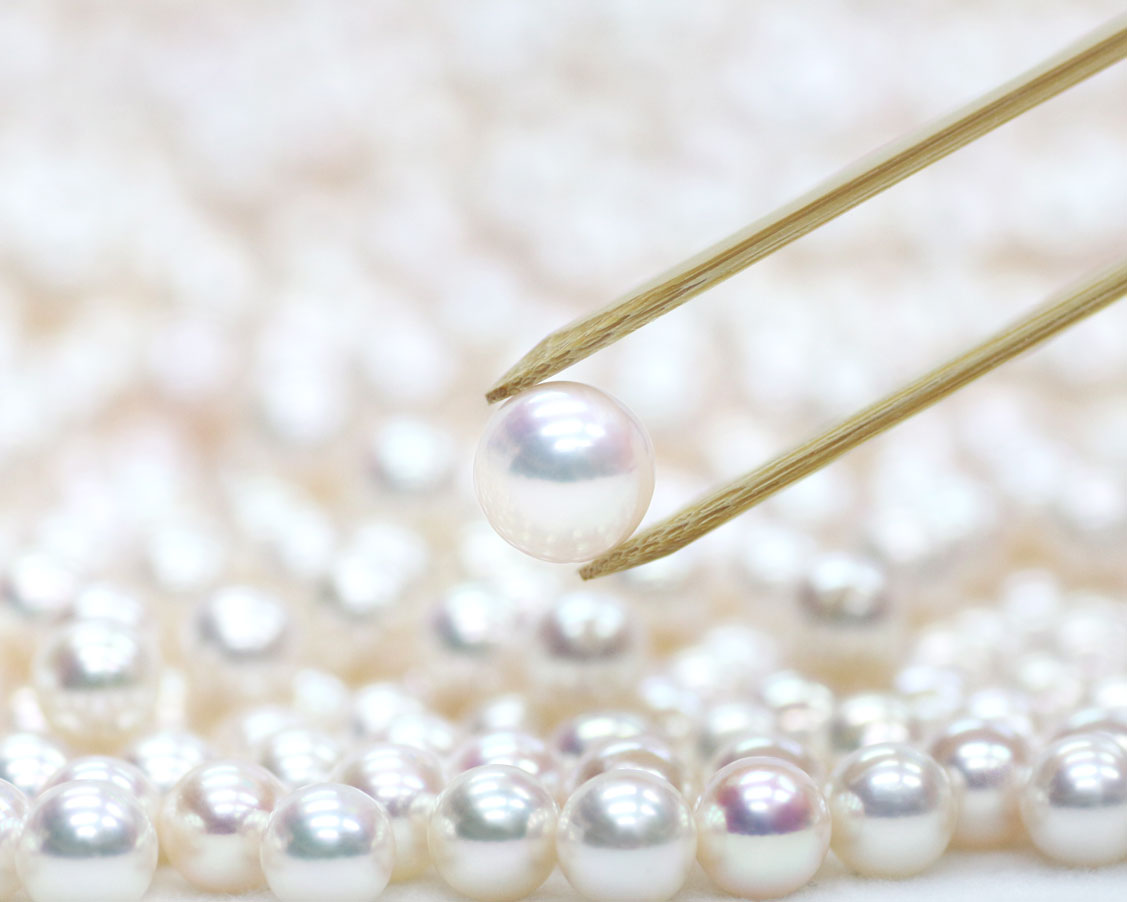
PEARL GRADING
![]()
Pearl grading is one of the most difficult aspects of pearl selection to understand. There is no officially recognized, standard system for grading pearls, except in the case of Tahitian pearls, where grading and export is controlled by the French Polynesian government. For that reason, it is important to understand the grading that you purchase. A detailed explanation of luster, surface, shape and color is necessary to make an educated purchase decision.
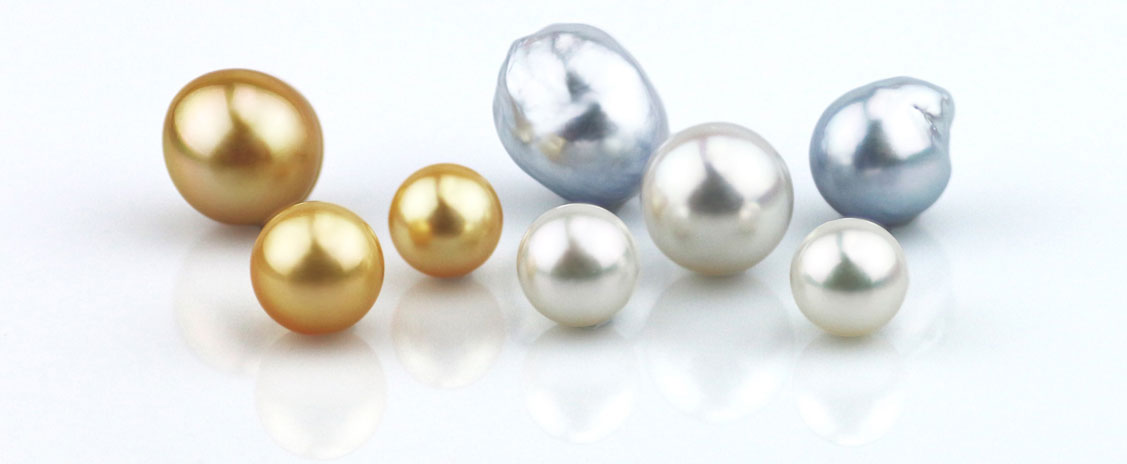
SOUTH SEA PEARLS
![]()
The word “nacre” comes from the Persian word nakkar, which means shimmering ornament, and has come to refer to the pearl oyster.
South Sea Pearls are cultured in the Pinctada maxima Pearl Oyster, there are two different color of varieties; the white-lipped and the gold-lipped. Pinctada maxima is one of the most sought-after species; these bivalves have enormous shells, with very white and thick nacre, and produce some of the largest and most lustrous pearls.
South Sea pearls are typically larger than other saltwater pearl varieties. Their growth period is approximately 2-4 years, unlike the akoya pearls, which develop in 1-2 years, and Tahitian pearls which develop in 18 months to 2 years.
White South Sea Pearls are known for retaining their value better than other types of pearls. Because they are unusally large and quite rare, their value continue to last a lifetime.
The value of a golden South Sea pearl is heavily dependent upon the color; the deeper the golden color, the more valuable the pearl. The overall value of golden pearls are also very comparable to white South Sea pearls. The deepest golden color, often referred to as 24 karat, is considered the most valuable color of all South Sea pearls.
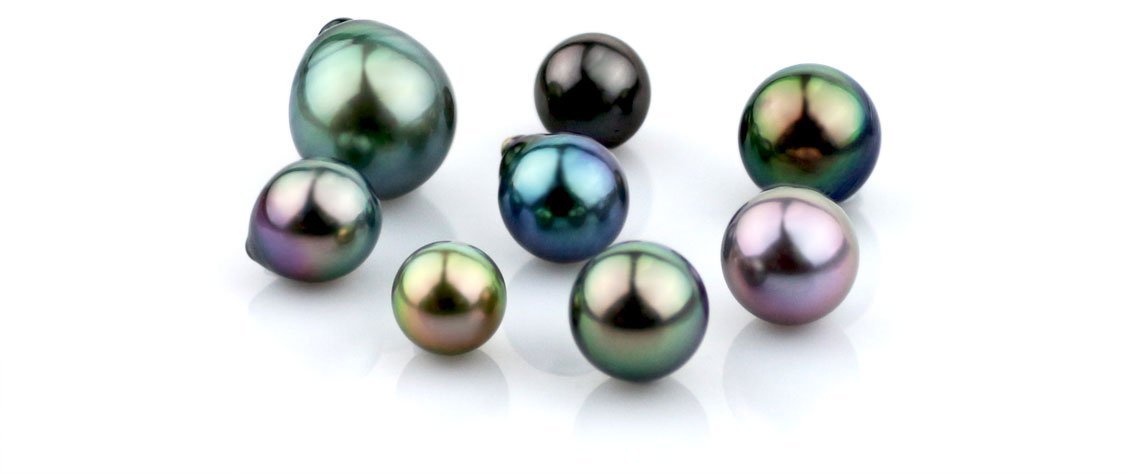
TAHITIAN PEARLS
![]()
The oysters that give birth to Tahitian cultured pearls are among the largest, capable of reaching 30cm in diameter, and go by the name Pinctada margaritifera, Cuminii variety. Margaritifera is an evocative name, from the Latin margarita, meaning both treasure and pearl.
The nacre has lived in Polynesian waters since long ago, and man long has coveted the rich bronze glimmer of its shell. Part of the illustrious Pteriidae family, the nacre is renowned for the quality of its aragonite mother-of-pearl secretions.
THE BIRTH OF PEARLS
Pearls take their time. They develop for 18 months before entering the world. Each day, hundreds of thin pearl layers and aragonite crystals aggregate around the beads, grafting tissue from the oysters’pearl sacs. The orient of pearls and the depth of their radiance depend on this alchemical transmutation.
Once mature, the oysters are grafted in graft fare, simple houses on stilts constructed above the lagoons, only steps away from pearl farms. There, grafters harvest what they sowed several months or years earlier.
While the grafters admire the most beautiful South Seas gems, entire, busy teams suround them. From sunrise to sunset, pearl farms echo with the sounds of men and women working, their gloved hands detaching, piercing and cleaning the young shells, pulling “kangaroos”, the nets that hold grafted oysters, out of the water. This is hard, dangerous work that only indigenous people from these islands can do, but it allows them to continue living on the isolated atolls.
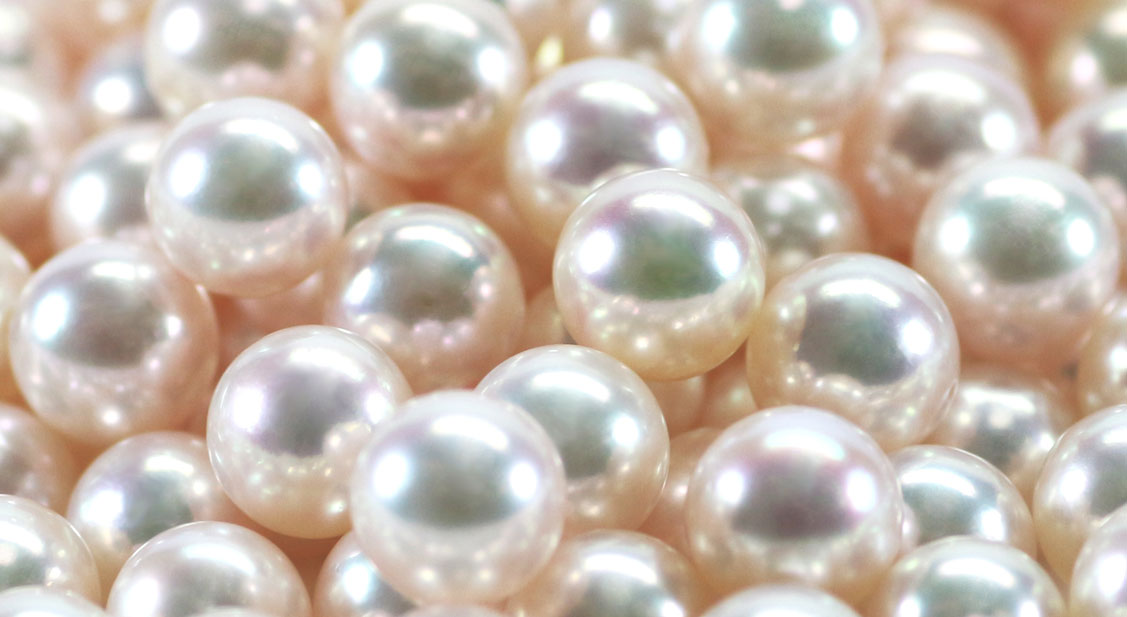
AKOYA PEARLS
![]()
AKOYA PEARLS found mainly off the Southern and Western coastal areas of Japan and China. The akoya pearl is a saltwater cultured pearl from the akoya oyster know as "Pinctada Fucata Martensii". Their sizes range from 3mm to 10mm and are more constantly round or near round in shape. They are considered to be ‘Classic’ Pearls and are more commonly White or Cream coloured with overtones of white to grey, pink to green, or blue and silver. Occasionally, akoya pearls are blue with silver and rose pink overtones, but these colors are extremely rare. Akoya pearls are never naturally black – black akoya pearls have undergone either Cobalt-60 radiation treatment or treatment with an organic dye.
Akoya pearls also considered used for necklaces and other pearl jewelry, with perfect round shapes, bright mirror-like luster and neutral colors. Akoya pearl are favoured by most retailers and cosmopolitan ladies.
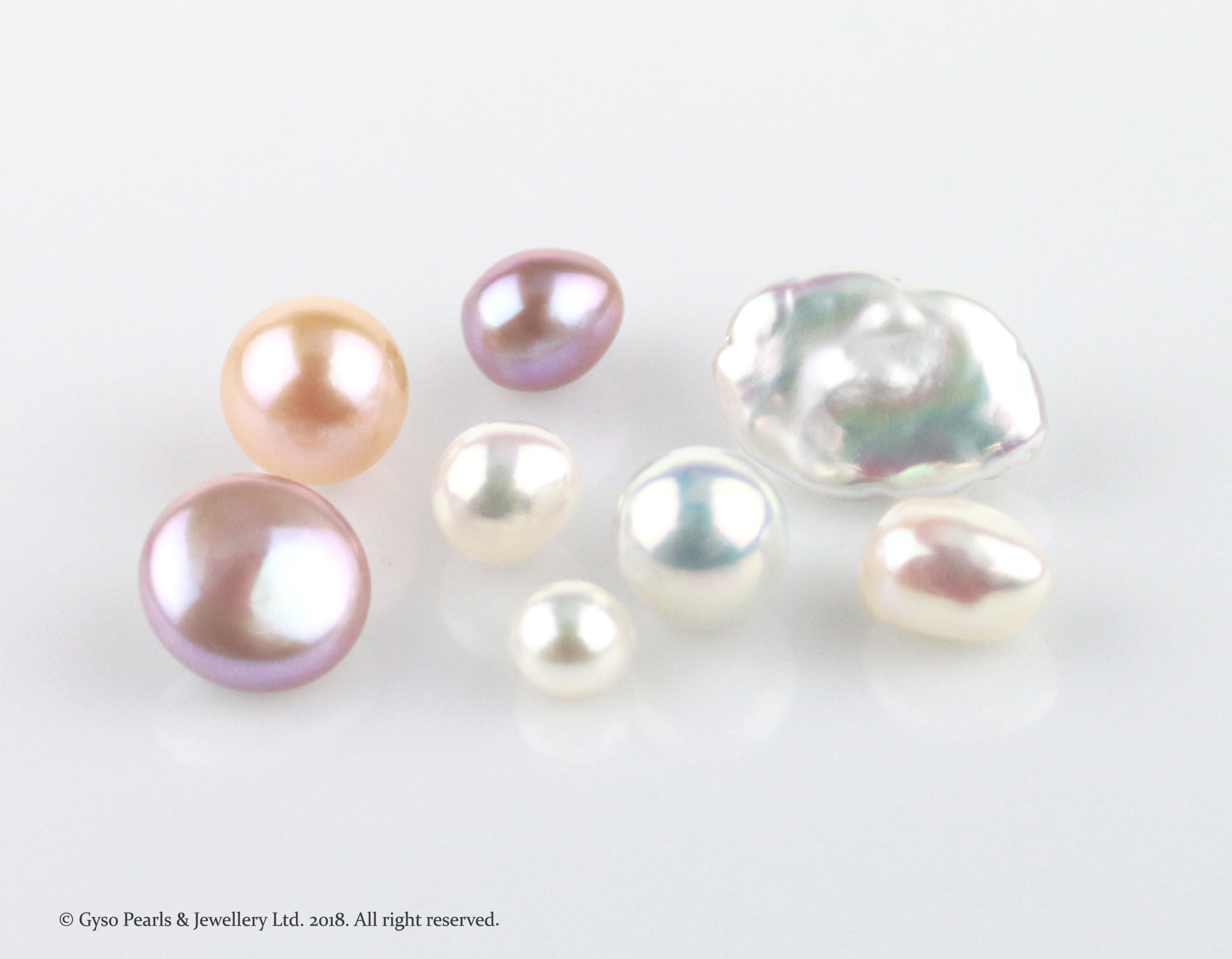
FRESH WATER PEARLS
![]()
FRESH WATER PEARL originally found in rivers such as the Yangtze in eastern China. They come in eight basic shapes―round, semi-round, button, drop, pear, oval, baroque and circled ― with perfectly round the rarest and most valuable.
Apart from shape, Fresh Water Pearls all share serveral key attributes that have made them the perfect choice for jewellers.
Colour is the defining characteristic. The pearls are rich in shades caused mainly by the mother of pearl used. They feature natural layers of colours, such as white, silver grey, pink, orange, yellow and purple, that may also be affectd by different water content.
Fresh Water Pearl shapes are equally distinctive, as the non-nucleus insertion method ensures they can be raised in various shapes, such as round, semi-round, potato, rice, short rice, long rice, water drop, flat, twin face, quad face or bread varieties.
Conversely, the nucleus insertion technique results in pearls with round, square, rectangular, rhombus or button shapes depending on the market demand. And of course, whatever the choice, the size or the setting, it’s certain that any of these sensual shapes will dazzle and delight wearers and admirers alike.

The mabe oyster belongs to the family Pteriidae.
It's scientific name is Pteria Penguin. The is because the mabe oyster's shell looks as if a penguin is flagging its wings.
The mabe oyster grows to be about 23cm - 25cm in average. It takes 3-4 years from artifical spat collection (collection of egg, fertilization till growing up to young oyster) till grow into the necessary size to become a mother oyster. After inserting nucleu into the mother oyster, it takes another 1-2 years, thereby totally 4-6 years to produce a mabe pearl.
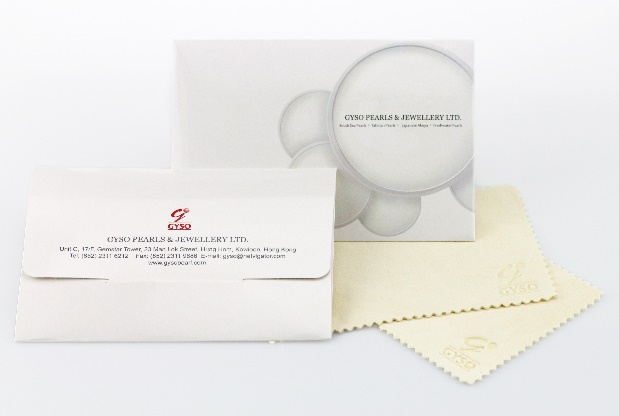
PEARL CARE
![]()